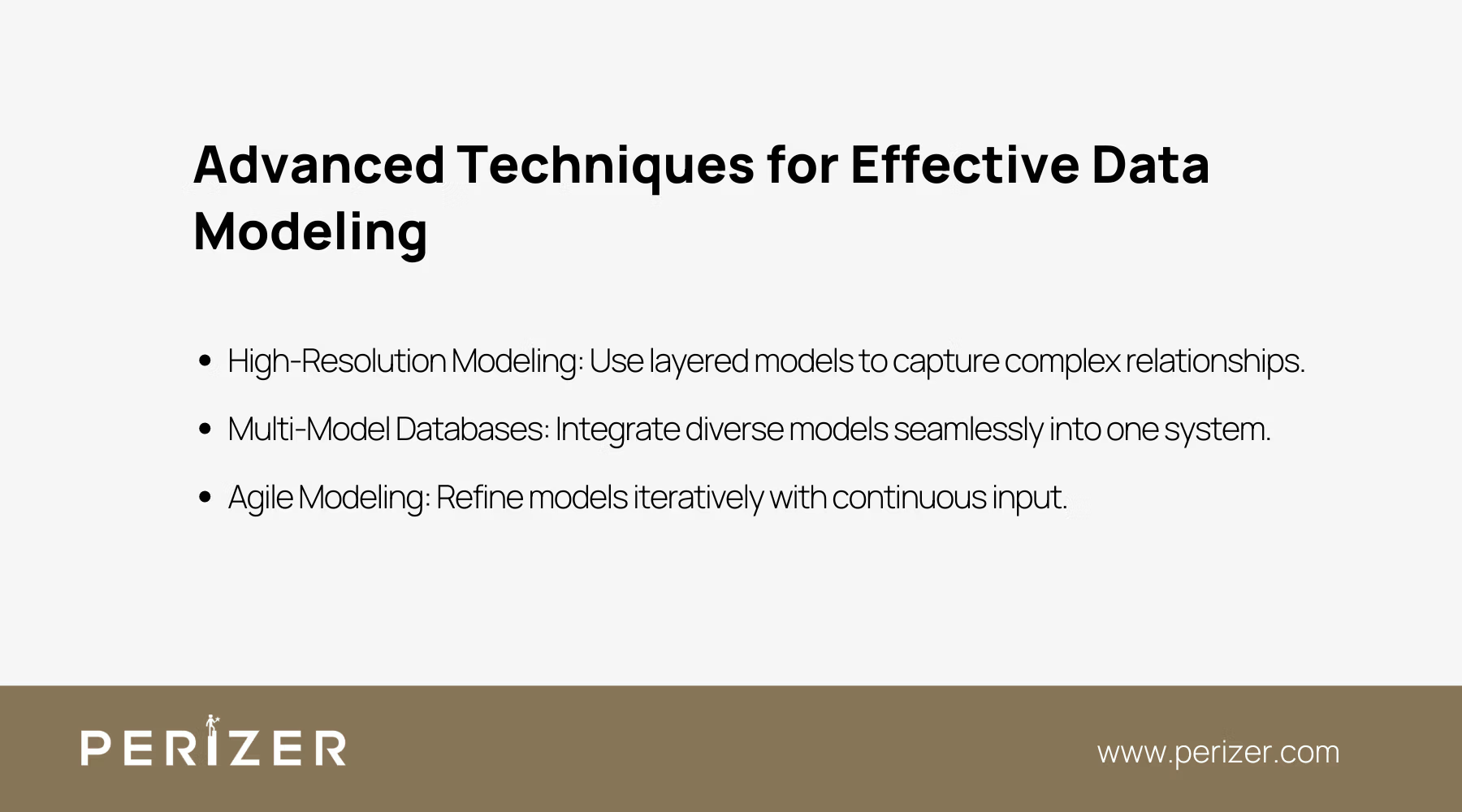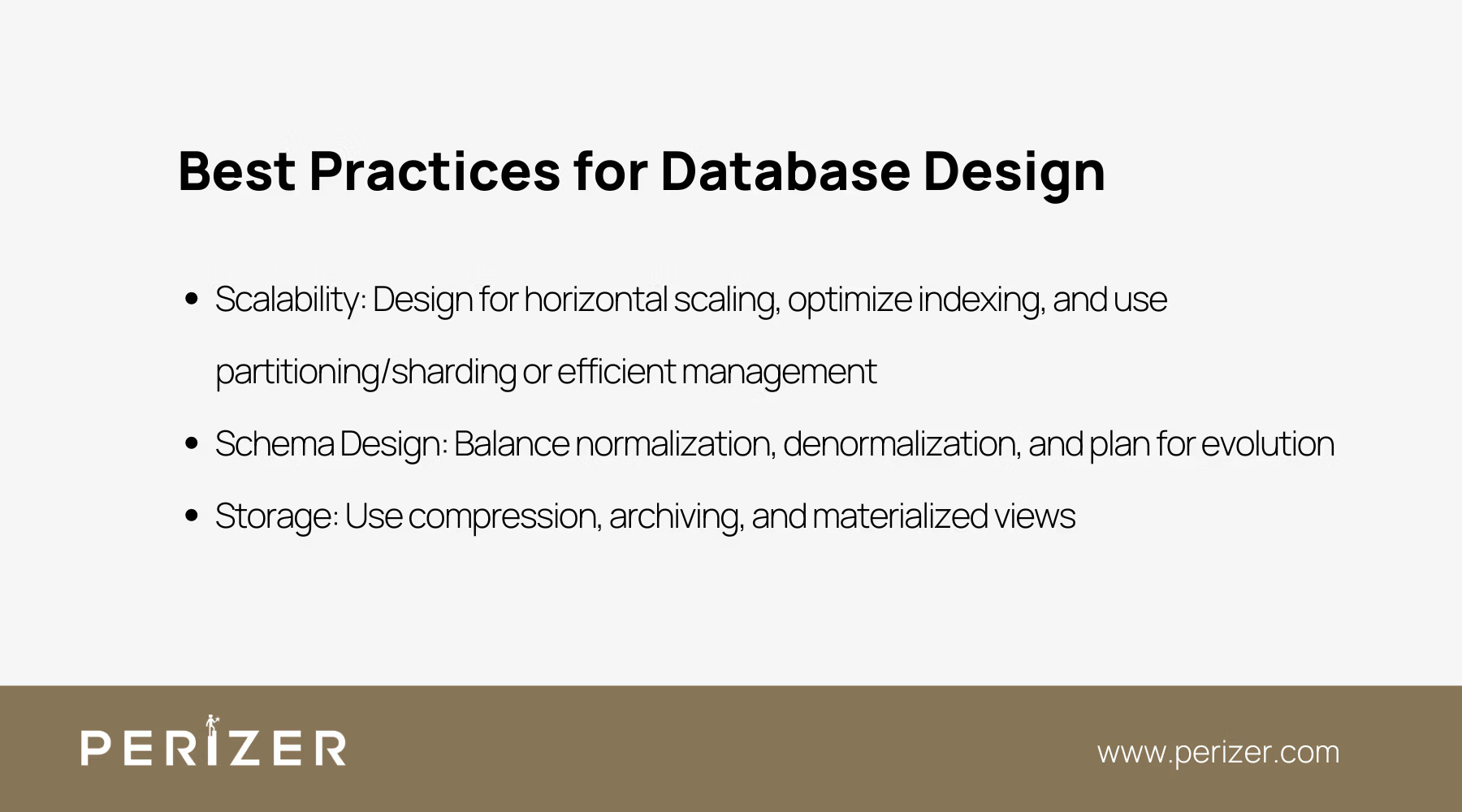Designing Effective Data Architectures: Key Principles and Practices
Learn advanced strategies to design scalable, flexible, and secure data architectures that support long-term business growth and adaptability.

With data volumes doubling every few years, businesses without a solid data architecture face a serious risk of falling behind. Your data architecture isn’t just a technical component - it’s the foundation that enables your company to grow, adapt, and stay competitive.
Designing an effective data architecture requires more than your technical expertise; it demands thoughtful decisions that align with your business goals and prepare you for future challenges. The way you approach data modeling, database design, and schema structuring now will directly shape how agile and resilient your organization can be in the face of change.
In this guide, we’ll explore advanced principles and strategies to help you build a powerful, adaptable data architecture by focusing on key decisions and practical steps to ensure your architecture supports your business as it grows and evolves.
The Role of Data Architecture in Complex Systems
To design a truly effective data architecture, it’s important to understand the central role it plays in your organization. It’s not just another technical structure - it’s the foundation that supports every decision, operation, and innovation driven by data. Your architecture dictates how smoothly data moves across systems, how quickly it can be accessed, and how effectively it can be used to inform strategic decisions.
When designing your data architecture, the first step should always be aligning it with your business goals. Think about where your organization is headed and how the architecture can help you get there. Whether your focus is on boosting analytics, streamlining operations, or launching new digital initiatives, your architecture needs to be built to grow with these objectives. Ignoring this alignment can lead to costly revisions and performance issues down the road.
Core Principles of Advanced Data Architecture Design
Designing an advanced data architecture requires thoughtful planning. Focus on integrating scalability, flexibility, and performance optimization into every part of your system.
Scalability is most important - your architecture should grow with your business without needing major overhauls. Aim for horizontal scalability by adding servers or nodes to manage increased load instead of relying on expensive upgrades.
Flexibility is equally important. With constant changes in technology and market demands, your data architecture must be able to adapt. It should integrate new data sources easily and support new types of data analysis. Building flexibility into your architecture means planning for change from the start, so you’re ready to adjust as new challenges arise.
Performance is also the most important component. Ensure efficient data retrieval, processing, and storage through careful planning of data flows, smart indexing, and effective caching.
Advanced-Data Modeling Techniques

1. High-Resolution Data Modeling
A solid data architecture starts with an effective data model. To achieve high-resolution modeling, go beyond basic diagrams and capture the complex relationships and hierarchies in your business. Your data model should be detailed and expressive enough to accurately reflect your operations.
Start by identifying the key entities and mapping their relationships, but dig deeper—are these relationships hierarchical, many-to-many, or time-bound? Including these nuances will improve your analysis and reporting.
A more advanced technique is to layer your data models. Rather than trying to capture everything in one model, create different models for different aspects of your business. Begin with a high-level conceptual model, then a logical model for specific relationships, and finally, a physical model for how data is stored. This approach keeps your models both comprehensive and manageable.
2. How to Integrate Multi-Model Databases
Modern enterprises often deal with a diverse range of data types - structured, unstructured, graph-based, etc. To accommodate this, consider integrating multi-model databases into your architecture. These databases allow you to work with different data models within a single database system, providing greater flexibility and efficiency.
To successfully integrate a multi-model database, start by clearly defining your use cases. Determine which types of data and queries are most critical to your operations and how they can be best supported by different data models. For example, use a relational model for transactional data, a document model for unstructured data, and a graph model for relationship-heavy data.
Next, design your architecture to support seamless interaction between these models. This involves careful planning of how data will flow between different models and ensuring that your database management system (DBMS) can handle these interactions efficiently. Pay close attention to indexing and querying strategies, as these will be key to maintaining performance across different data models.
3. Using Agile Methodologies in Data Modeling
Traditional data modeling can struggle to keep up with the changing needs of a growing business. That’s where agile methodologies can help, offering a more flexible and iterative way to build and adjust your data models as your business grows.
To start, break your data modeling process into smaller, manageable steps. Instead of trying to create a complete model all at once, focus on developing and refining smaller pieces over time. This approach allows you to incorporate feedback and make adjustments as your business needs change.
Collaboration plays a key role in agile data modeling. Involve stakeholders early and regularly, ensuring the models you create truly reflect their needs. This collaboration not only improves the quality of your data models but also helps gain support from those who will be using them, making implementation smoother.
Finally, embrace the idea of continuous improvement. Regularly review and update your data models as your business grows and changes. By continuously refining your models, you can ensure that your data architecture stays aligned with your business goals and remains flexible enough to adapt to whatever the future brings.
Best Practices for Database Design

1. Designing for Scalability and Performance
When designing a database for scalability and performance, it’s important to look beyond immediate needs. Start by considering how your data will grow over time and choose a system that can scale horizontally, allowing you to add more nodes as your data expands.
Next, optimize your indexing. While indexes can speed up queries, they can also slow down writes if overused. Focus on indexing the columns that are queried most often and use composite or partial indexes where needed.
Partitioning and sharding are key techniques for managing larger databases. Partitioning splits your database into smaller, more manageable sections that can be optimized individually. Sharding distributes these partitions across multiple servers, boosting scalability but requiring careful planning to maintain data consistency and query performance.
Finally, use caching to improve performance by storing frequently accessed data in memory, reducing query times. However, be mindful of challenges like cache invalidation and consistency, and choose the right caching strategy - whether write-through or write-back - based on your specific needs.
2. Schema Design for Complex Applications
When designing schemas for complex applications, it’s essential to balance normalization and denormalization. Normalization reduces redundancy and improves data integrity but can slow down performance with complex joins. Denormalization, on the other hand, speeds up queries by reducing joins but introduces redundancy and the risk of data anomalies.
The right approach depends on your application. For transactional systems, normalization is usually best to maintain consistency. For analytical systems, denormalization often works better to boost query speed.
Also, keep schema evolution in mind. As your application grows, your schema will need to adapt. To do this smoothly, design with versioning in mind and use techniques like backward-compatible changes and migration scripts to avoid disruptions.
3. Optimizing Database Storage and Retrieval
Optimizing storage is most significant as data volumes grow. Start by using data compression to reduce storage needs - many databases offer built-in compression, but custom techniques can be even more effective for specific data types.
Archiving can also help by moving less frequently accessed data to free up space in your primary database, but it requires careful management to ensure easy retrieval. A tiered storage strategy, where data is stored based on how often it’s accessed, can make this process smoother.
For data retrieval, optimizing your queries is also essential. This means not just improving individual queries but also designing your schema and indexes to support efficient execution. Use query profiling tools to spot and fix bottlenecks.
Materialized views can further enhance retrieval by precomputing and storing results of complex queries, cutting down on execution time. However, they come with trade-offs like increased storage use and potential data staleness, so consider using incremental refresh techniques to keep them up-to-date without heavy storage costs.
Implementing Data Governance and Security
1. Designing for Data Governance
Data governance isn’t something you can add on later - it needs to be built into your architecture from the start. This means designing your system to support key governance practices like data lineage, stewardship, and regulatory compliance.
Begin by creating a data catalog that inventory all your data assets, complete with metadata detailing their origin, usage, and ownership. This helps ensure your data is well-managed and governed.
Tracking data lineage is also crucial. Design your architecture to monitor how data flows through your systems, from its source to its final destination, which is vital for maintaining data quality and meeting regulations.
To support data stewardship, include role-based access controls and governance workflows in your architecture. This ensures that only authorized users can access data, and any changes are properly documented and approved, keeping your data accurate, consistent, and secure.
2. Advanced Security Architecture in Data Systems
Security is essential in your data architecture, especially with rising threats and strict regulations. Start by implementing encryption at every stage - whether data is at rest, in transit, or use. Use strong encryption algorithms and secure your encryption keys, possibly with hardware security modules (HSMs).
Access control is also important. Implement role-based access control (RBAC) to limit data access to only what users need for their jobs. Add multi-factor authentication (MFA) for an extra layer of security.
Auditing and monitoring are also vital. Include comprehensive logging and real-time monitoring in your design to quickly detect and respond to security incidents. Use anomaly detection algorithms to spot unusual behavior that might signal a breach.
Finally, ensure your system is resilient. Protect against common threats with intrusion detection and prevention systems (IDS/IPS). Have disaster recovery and business continuity plans in place to quickly restore data in case of a breach or failure.
Future-Proofing Your Data Architecture
1. Designing for Emerging Technologies
When designing your data architecture, it’s important to plan for emerging technologies. Your architecture should be flexible enough to integrate new tech as it evolves.
Start by building modularity into your system. Modular designs let you upgrade or replace components without overhauling the entire system. For instance, if real-time data processing becomes essential, a modular setup allows for easy integration of the necessary technology.
Also, use open standards and APIs. Open standards ensure compatibility with future technologies, while APIs provide a consistent way for different systems to work together as new tools are introduced.
2. How to Plan for Long-Term Data Growth and Change
Planning for long-term data growth and change is a major challenge in data architecture design. You need to anticipate both how your data volumes will expand and how your needs will grow.
Start by analyzing your current data growth trends to predict future needs, considering factors like data creation rates and usage patterns. Design your architecture to scale horizontally, so you can add capacity as your data grows.
Also, account for the impact of new technologies and business requirements. Your architecture should be flexible enough to adapt to these changes without major overhauls. A microservices architecture can help, allowing you to easily add or remove components as needed.
Lastly, plan for data migration and archiving. As your data grows, you'll need to move or store older data. Ensure your architecture supports these processes smoothly, without disrupting your operations.
Conclusion
Designing a strong data architecture is no small task, especially in modern enterprise environments. But by focusing on scalability, flexibility, and security - as outlined in this guide - you can create a system that supports your business as it grows and adapts. Key takeaways include the importance of planning for long-term data growth, building flexibility to accommodate new technologies, and integrating robust security measures from the start.
Success in this area comes down to careful planning, continuous refinement, and a thoughtful approach to design. As you refine your architecture, you’ll not only strengthen your data systems but also equip your organization to achieve its full potential.
FOCUSED, FAST, GOVERNMENT READY
Stay Tuned With Our Latest Insights

Staff Augmentation
Learn how to select the perfect IT outsourcing partner to promote your team’s capabilities, improve productivity, and drRead more...

Staff Augmentation
Find the perfect staff augmentation partner by aligning your goals, evaluating expertise, managing costs, and ensuring aRead more...

Cyber Security
We focus on understanding the needs, behaviors, and expectations of your users through extensive user research. This infRead more...